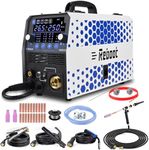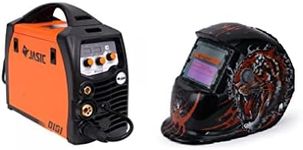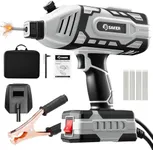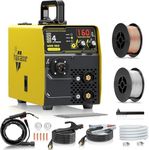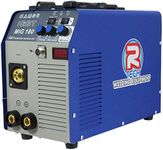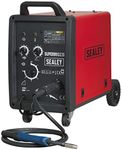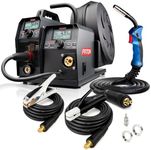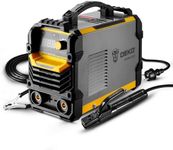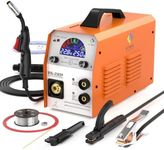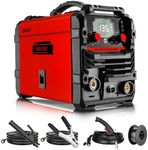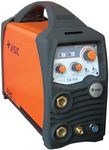Buying Guide for the Best Welding Machines
Choosing the right welding machine can be a daunting task, especially if you're new to welding. The key to making the right choice is understanding your specific needs and matching them with the machine's capabilities. Whether you're a hobbyist, a professional welder, or someone who needs a welding machine for occasional repairs, knowing the key specifications will help you make an informed decision. Here are the main specs you should consider when selecting a welding machine and how to navigate them.Type of Welding ProcessThe type of welding process is crucial because it determines the kind of work you can do with the machine. The main types are MIG (Metal Inert Gas), TIG (Tungsten Inert Gas), Stick, and Flux-Cored welding. MIG welding is versatile and easy to learn, making it great for beginners and general-purpose use. TIG welding offers precision and is ideal for thin materials and detailed work. Stick welding is robust and works well for outdoor and rusty surfaces. Flux-Cored welding is similar to MIG but better for thicker materials and outdoor use. Choose the process based on the materials you plan to weld and the environment you'll be working in.
Amperage RangeAmperage range indicates the power output of the welding machine and determines the thickness of the materials you can weld. Lower amperage (20-100 amps) is suitable for thin materials like sheet metal, while higher amperage (100-250+ amps) is needed for thicker materials. If you plan to work on a variety of projects, a machine with a wide amperage range will offer more flexibility. Consider the thickness of the materials you typically work with to choose the right amperage range.
Duty CycleThe duty cycle is the amount of time a welding machine can operate continuously before needing to cool down. It is usually expressed as a percentage of a 10-minute period. For example, a 60% duty cycle at 200 amps means the machine can weld for 6 minutes at 200 amps before requiring a 4-minute break. A higher duty cycle is important for longer welding tasks and professional use. If you plan to weld for extended periods, look for a machine with a higher duty cycle to avoid frequent interruptions.
Input VoltageInput voltage refers to the electrical power required to run the welding machine. Common options are 110-120V for home use and 220-240V for industrial or heavy-duty applications. Some machines are dual voltage, offering flexibility to switch between different power sources. Choose a machine that matches the power supply available in your workspace. For home use, a 110-120V machine is usually sufficient, while professional settings may require a 220-240V machine.
PortabilityPortability is an important factor if you need to move the welding machine frequently. Lighter and more compact machines are easier to transport and store. However, portable machines may have lower power output compared to larger, stationary models. Consider how often you'll need to move the machine and the trade-off between portability and power. For occasional use and small projects, a portable machine is ideal. For heavy-duty and stationary work, a larger machine may be more suitable.
Additional FeaturesAdditional features can enhance the usability and performance of a welding machine. Look for features like adjustable settings, digital displays, thermal overload protection, and compatibility with various accessories. These features can make the machine easier to use and more versatile. Think about the specific needs of your projects and whether these additional features will provide significant benefits. For example, digital displays can help with precise settings, while thermal protection can extend the machine's lifespan.
